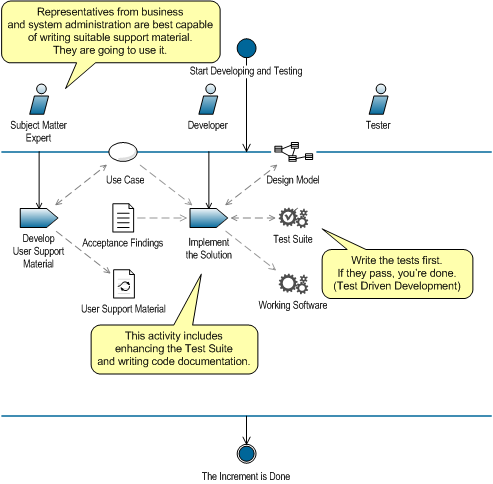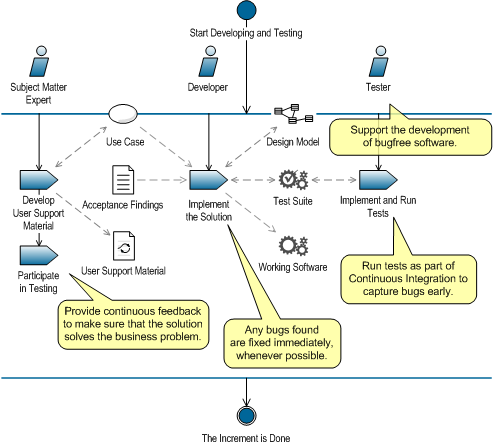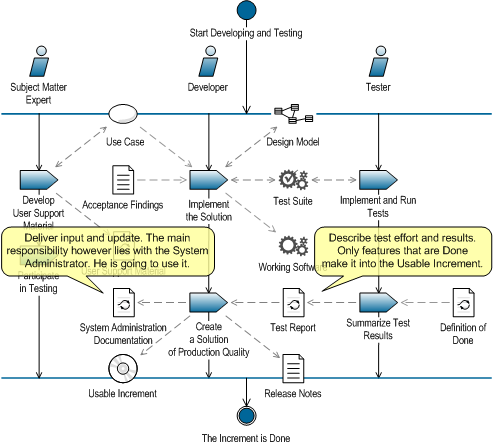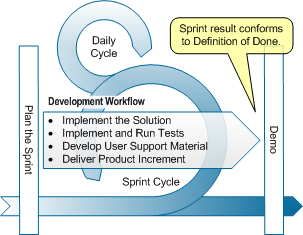To get a story done it has to be implemented and as near to production quality as the team can get it. For this the team has to build software and test it. Scrum provides little guidance for the team on how to do that accept for saying the team has to self-organize. XP provides a set of day-to-day practices and stresses that the team as a whole should feel responsible for the Sprint result. This still means the team has to devide tasks in a way that ensures that the customer will get the most value out of each working day.
In Figure 41 through Figure 43 we build up a workflow explaining a RUP based process of software development and testing you can follow to get a Usable Increment done. A key to the symbols used in this workflow can be found in here.

Input to this workflow is an agreed set of Use Cases or Use Case scenarios that are pokered and forecasted to be done by the end of this Sprint.
 |
| Figure 41: Development Workflow -- implementing |
 |
| Figure 42: Development Workflow – testing |
 |
| Figure 41: Development Workflow – Delivering |
Toward the end of the Sprint, the Tester summarizes the testing efforts and his view on the readiness of the implemented stories in a Test Report. The Developer prepares a Usable Increment, with Release Notes and relevant System Administration Documentation. Progress is measured in stories that are done and delivered as part of that Usable Increment.
Figure 44 gives an overview of stakeholder roles and team roles and the work products they collaborate on to get a Usable Increment done.
 |
| Figure 44: Development Collaboration Matrix |
 |
| Figure 45: Positioning the Development Workflow |
The introduction to this post can be found at ScrumUP Fairytale - Part 4
Part 1 of this post is Get Ready to Poker.
Part 3 of this post is Experience the Product.
Part 4 of this post is Iterations in Time.
Other Relevant Posts:
Be Transparent

This is one of the best blogs on the internet. Really informational and amazing content. Happy Independence Day Greetings
ReplyDelete